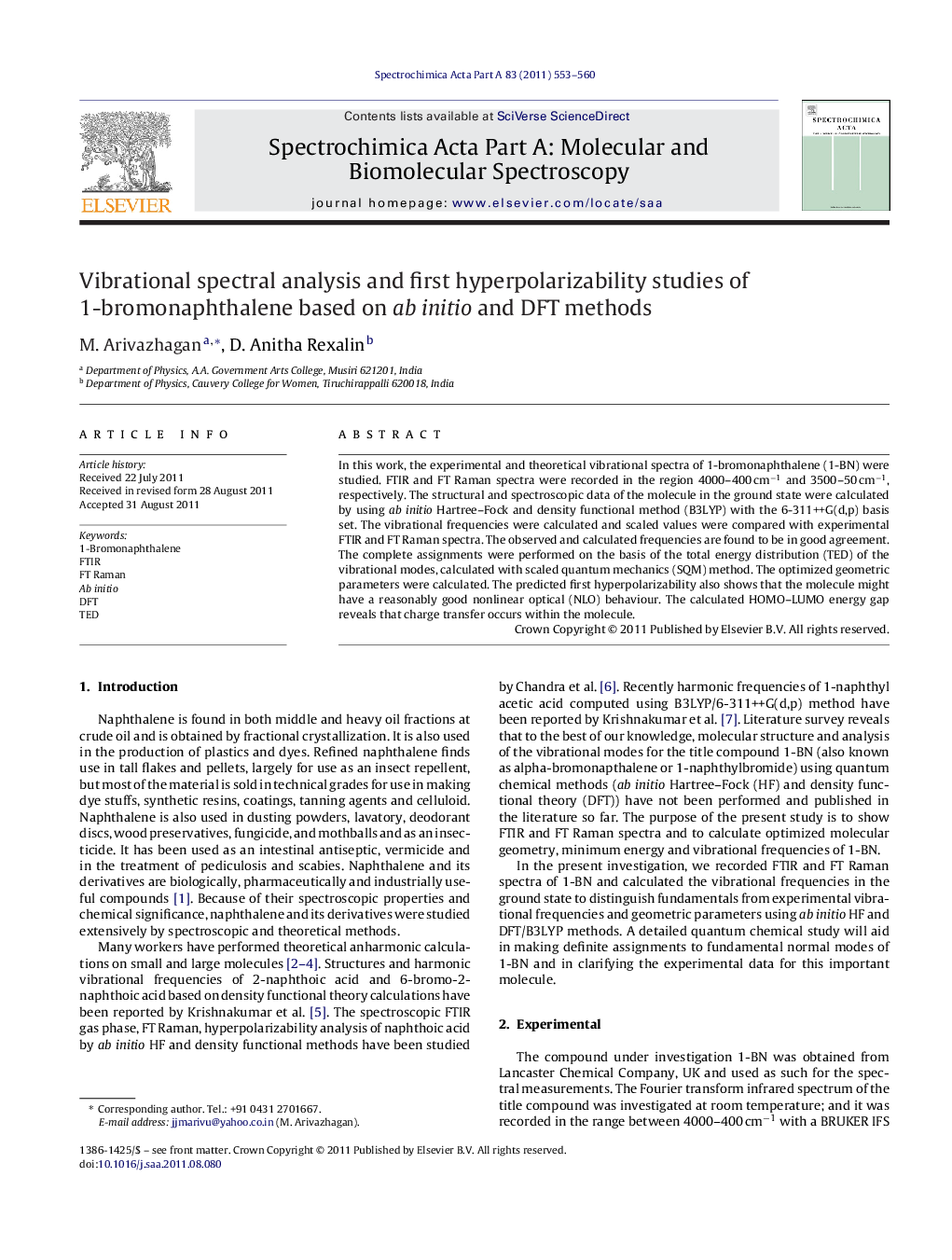| Article ID | Journal | Published Year | Pages | File Type |
|---|---|---|---|---|
| 1235219 | Spectrochimica Acta Part A: Molecular and Biomolecular Spectroscopy | 2011 | 8 Pages |
In this work, the experimental and theoretical vibrational spectra of 1-bromonaphthalene (1-BN) were studied. FTIR and FT Raman spectra were recorded in the region 4000–400 cm−1 and 3500–50 cm−1, respectively. The structural and spectroscopic data of the molecule in the ground state were calculated by using ab initio Hartree–Fock and density functional method (B3LYP) with the 6-311++G(d,p) basis set. The vibrational frequencies were calculated and scaled values were compared with experimental FTIR and FT Raman spectra. The observed and calculated frequencies are found to be in good agreement. The complete assignments were performed on the basis of the total energy distribution (TED) of the vibrational modes, calculated with scaled quantum mechanics (SQM) method. The optimized geometric parameters were calculated. The predicted first hyperpolarizability also shows that the molecule might have a reasonably good nonlinear optical (NLO) behaviour. The calculated HOMO–LUMO energy gap reveals that charge transfer occurs within the molecule.
Graphical abstractIn this work, the experimental and theoretical vibrational spectra of 1-bromonaphthalene (1-BN) were studied. FTIR and FT-Raman spectra were recorded in the region 4000–400 cm−1 and 3500–50 cm−1, respectively. The structural and spectroscopic data of the molecule in the ground state were calculated by using ab initio Hartree–Fock and density functional method (B3LYP) with the 6-311++G(d,p) basis set. The vibrational frequencies were calculated and scaled values were compared with experimental FTIR and FT-Raman spectra. The observed and calculated frequencies are found to be in good agreement. The complete assignments were performed on the basis of the total energy distribution (TED) of the vibrational modes, calculated with scaled quantum mechanics (SQM) method. The optimized geometric parameters, HOMO–LUMO energy gap and first hyperpolarizability were calculated.Figure optionsDownload full-size imageDownload as PowerPoint slideHighlights► The molecular geometry, vibrational frequencies of the molecule have been calculated by using HF and DFT methods with 6-311++G(d,p) basis set. ► The calculated HOMO–LUMO energy gap reveals that charge transfer occurs within the molecule. ► DFT is a promising method for molecular vibrational analysis. ► We feel that under the given circumstances the best solutions have been found.
